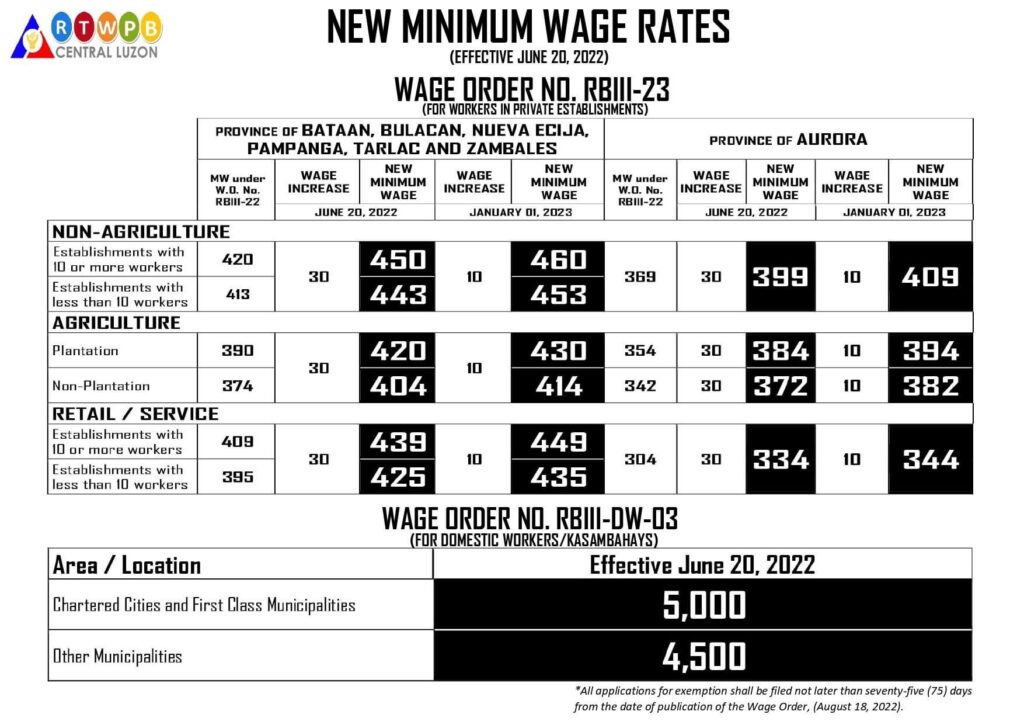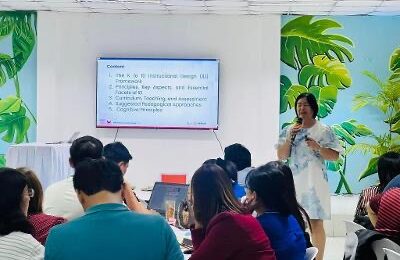
CITY OF SAN FERNANDO, Pampanga — A new minimum wage rate in Central Luzon will take effect on June 20 after its affirmation by the National Wages and Productivity Commission and publication in a local daily.
Wage Order No. RBIII-23 mandates a P40 increase in the daily minimum wage of workers in private establishments in Central Luzon.
“The P40 increase will be given in two tranches— P30 upon effectivity of the wage order on June 20 and another P10 effective January 1, 2023,” Regional Tripartite Wages and Productivity Board Chairperson and Department of Labor and Employment Regional Director Geraldine Panlilio explained.
Upon effectivity of the wage order, the new daily minimum wage in Central Luzon provinces except Aurora will be P450 for non-agriculture establishments with 10 or more workers and P443 for establishments with less than 10 workers.
Moreover, plantation workers in agricultural establishments will receive a daily minimum wage of P420 while non-plantation workers will receive P404.
Daily minimum wage in retail/service establishments with 10 or more workers, on the other hand, will be P439 while it is P425 in establishments with less than 10 workers.
In Aurora, the daily minimum wage rate for non-agricultural workers is P399 starting June 20.
Daily minimum wage of plantation workers in agricultural establishments will be P384 while P372 for non-plantation workers.
Workers in retail and service establishments in the province will receive a daily minimum wage of P334.
Meanwhile, Kasambahays or domestic workers in Central Luzon shall also receive an increase to their monthly wage on June 20.
Under Wage Order No. RBIII-DW-03, the new monthly wage in chartered cities and 1st class municipalities is P5,000 while P4,500 in other municipalities.
SOURCE: Carlo Lorenzo J. Datu (PIA3)





